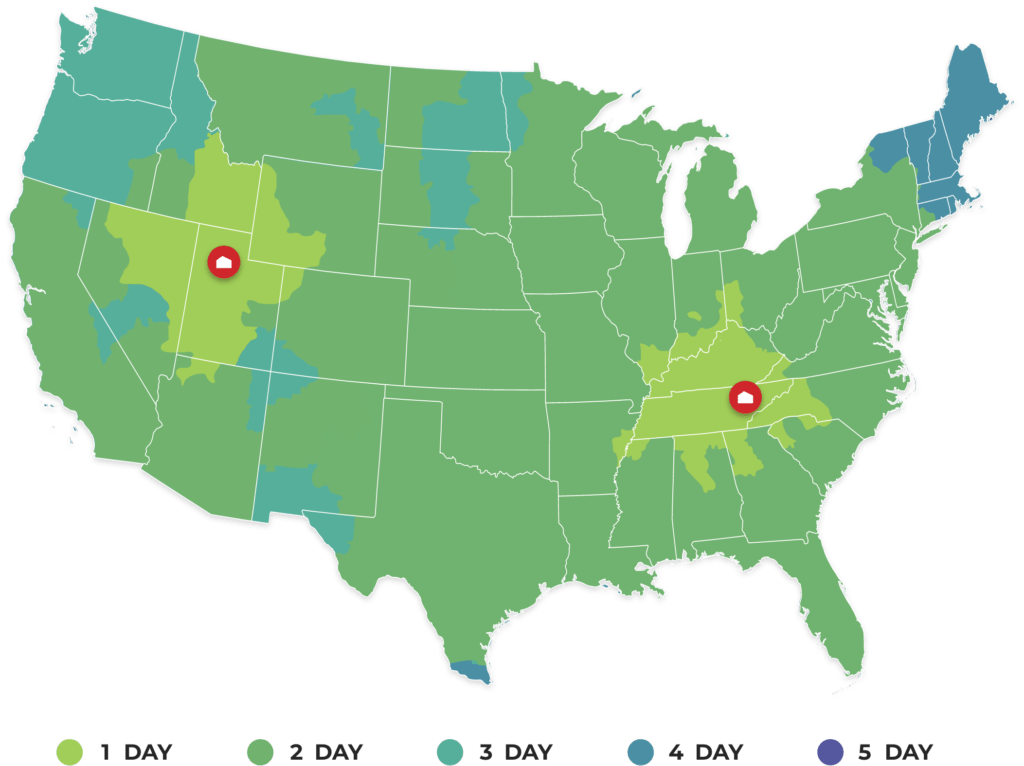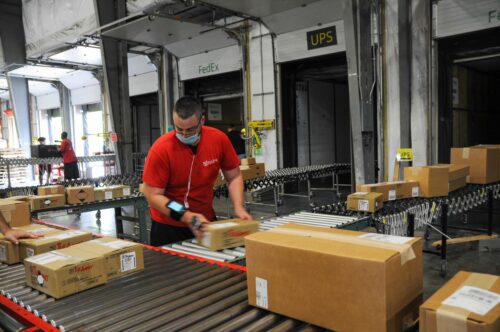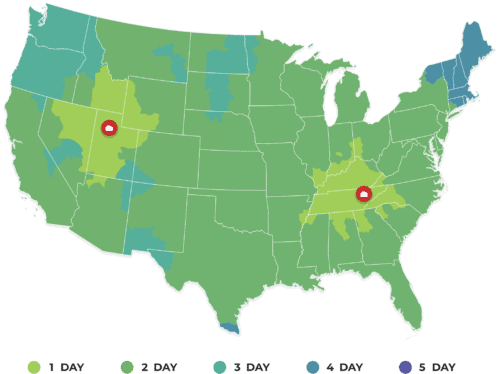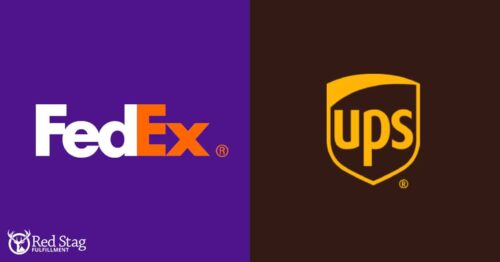Carrier peak charges are making a rushed holiday season even more stressful for some eCommerce stores. These fees coincide with most companies’ best sales opportunities and may make you worry about overall profitability. Thankfully, these fees typically end, and now most carriers have provided updates on when they expect to remove peak surcharges.
Peak charges are largely set to expire in mid-January 2022 for UPS, FedEx, LaserShip, and OnTrac, while USPS says they will end in late December 2021. Let’s look at these carriers’ latest releases and updates to understand what’s impacted, what isn’t, and what dates are firm.

UPS peak charges
UPS has a mix of peak charges set to expire in early 2022 and some that will continue “until further notice.” The carrier’s current charges for large packages and those over maximum limits have increased and will last through January 15th. It raised peak surcharges on October 17th and updated its peak charges guidance document. This raised many international shipment surcharges, and the increase has no set end date.
What’s also essential are potential peak surcharges that come outside of peak season. If you shipped more than 25,000 packages during any week after February 2020, they’ll charge a peak fee of $0.30 per package from January 17th, 2021, to October 30th, 2021.
FedEx peak charges
The latest information from FedEx points to most of its peak surcharges and fees expiring on January 16th, 2022. This covers additional handling and oversize charges, its standard peak surcharge, and peak residential delivery charges. It’s important to note that some surcharges are variable. For example, the peak surcharge on FedEx Ground Economy Package shipping ranges from $1.50 to $3, depending on the date you ship the parcel.
Like with UPS, high-volume shippers may face additional fees in 2022. Beginning on January 17th, 2022, customers who shipped more than 25,000 weekly average residential (excluding FedEx One Rate packages) and FedEx Ground Economy packages during peak times in October, November, or December will have an additional $0.60 per residential package.
LaserShip
LaserShip says its peak surcharges will start on October 30th, 2021, and run through January 14th, 2022. It is basing these expenses on your baseline volume with the carrier from May 29th through June 25th, 2021. If you didn’t use LaserShip before June 1st, the carrier will calculate the baseline using your October 2021 volume.
OnTrac
This carrier looks at peak charges a little differently. According to its service agreement, peak periods happen when estimated or actual network capacities exceed operational thresholds for consecutive days. OnTrac looks at these weekly and may assess a peak period at any time, with fee increases starting the Sunday of the following week.
For its more established peak surcharges, most are set to expire on January 15th, 2022. This includes its $6 additional handling, $60 large package, and fees based on going over your average weekly volume. One important note is that a $31.45 per package peak fee was put in place in early 2021 for large packages (charged in addition to the large package peak fee) and will continue “until further notice.”
USPS
The Postal Service set its 2021 peak holiday season charges to expire on December 26th, 2021. While this may change, the proposal covers temporary rates based on weight, zones traveled, and parcel services. These fees range from $0.75 for PM and PME flat rate boxes and envelopes to an increase of up to $5 for packages as heavy as 70 lbs. traveling to Zones 5 through 9.

December 25th arrival shipping dates
Carriers have also published their proposed dates for getting packages delivered to residences by December 25th. While we provide them below, it’s important to note that many packages faced significant delays in the 2020 holiday season. So, get your shopping done sooner rather than later for the safest bet. That goes for your personal shopping and the deals you’re offering to customers.
Now here are the dates these companies are telling consumers, so you may want to build in a little more space for your supply chain:
- FedEx: The company is telling people to ship goods no later than December 15th if they’re using its Ground services. For the 2-Day option, ship by December 22nd; and the Same Day service should be used by December 24th.
- UPS: The carrier is recommending people use its 3 Day Select option no later than December 21st, and its Next Day Air by December 23rd. Ground shipping doesn’t have a firm deadline, and the carrier recommends using its website for estimates. Contact your 3PL or carrier representative for support here, but it’s likely that you’re looking at no later than mid-December.
- USPS: Use the Postal Service’s Ground shipping options be December 15th for the best luck getting products to arrive on time. First-Class Mail should go out by the 17 and Priority by the 18. It’s still saying that Priority Mail Express can ship as late as December 23rd.

Could there be long-term peak charges?
As you dig through those links, one thing will become clear: Many “peak” fees previously introduced in 2020 have been carried through all of 2021 so far and may last well into 2022. In the pre-COVID times, peak surcharges were reliably cyclical. The eCommerce boom that happened during the pandemic meant that carriers were hitting peak volumes outside of the normal season.
So, carriers responded by introducing peak surcharges. Package volume has stayed high, and those initial charges related to the COVID increase have stuck around, essentially creating a secondary layer of peak charges. While some carriers are saying both the COVID-related peak charges and the current seasonal peak charges are expected to be removed in 2022, that’s not a sure bet at this moment.
Peak surcharges generally are based on volume. There’s little reason to expect eCommerce and parcel volume to decline significantly in Q1 2022 compared to Q1 2021. Carriers do adjust based on what’s happening in the market, both in terms of fees and the infrastructure they build. Volume growth has led to significant investment from major carriers and many regional partners, which might be used as a rationale to keep expenses high.
One lesson to learn is that carriers can introduce new charges and peak charges at any time. There’s no firm guarantee that carriers will remove any of the peak fees on the dates above. Capacity crunches like high return volumes may push peak through Q1 2022. Or, if the Port of L.A. can clear some backlog and reduce congestion after the typical holiday sales season, we may see peak charges extend. They could stretch to cover the times that eCommerce companies are using to fill backorders. The possibility exists for the peak to continue or some fees to become permanent.

How can you mitigate peak charges?
Current peak rates and charges, plus the general rate increases that typically come in January, can harm eCommerce profitability. Unfortunately, those costs will likely continue to scale. For instance, FedEx’s general rate increase (GRI) will be an average of 5.9% starting January 3rd, 2022. However, that is higher than the 4.9% increase in the past few years. Companies need to plan for management and mitigation now.
One of the easiest ways for you to address these charges is to negotiate better rates. Unless you’re a high-volume shipper, however, you may not be able to secure a significant reduction in rates or fees. Working with Red Stag Fulfillment typically will give you access to a better rate because we can leverage our entire order volume in carrier rate negotiations. It’s the most direct way for you to lower costs while still maintaining high levels of customer service and satisfaction.
Your other options are to try and absorb the rate increases or pass them along to customers. These choices could put your profitability or sales conversion potential at risk, but there’s little else to do. Some eCommerce brands may choose to only pass on peak charges — such as raising shipping costs for the customer by a flat fee during Q4 — and hoping their value proposition still wins the sale.
At Red Stag, our goal is to help you run a successful business. We’ll work on ways to manage carrier costs and peak charges as best as possible. By serving as an extension of your operations, we’ll try to reduce the zones you ship, give you more carrier partner options, and look for ways to cut packaging or reorganize shipments. We want you to have a better Q4 and 2022.











